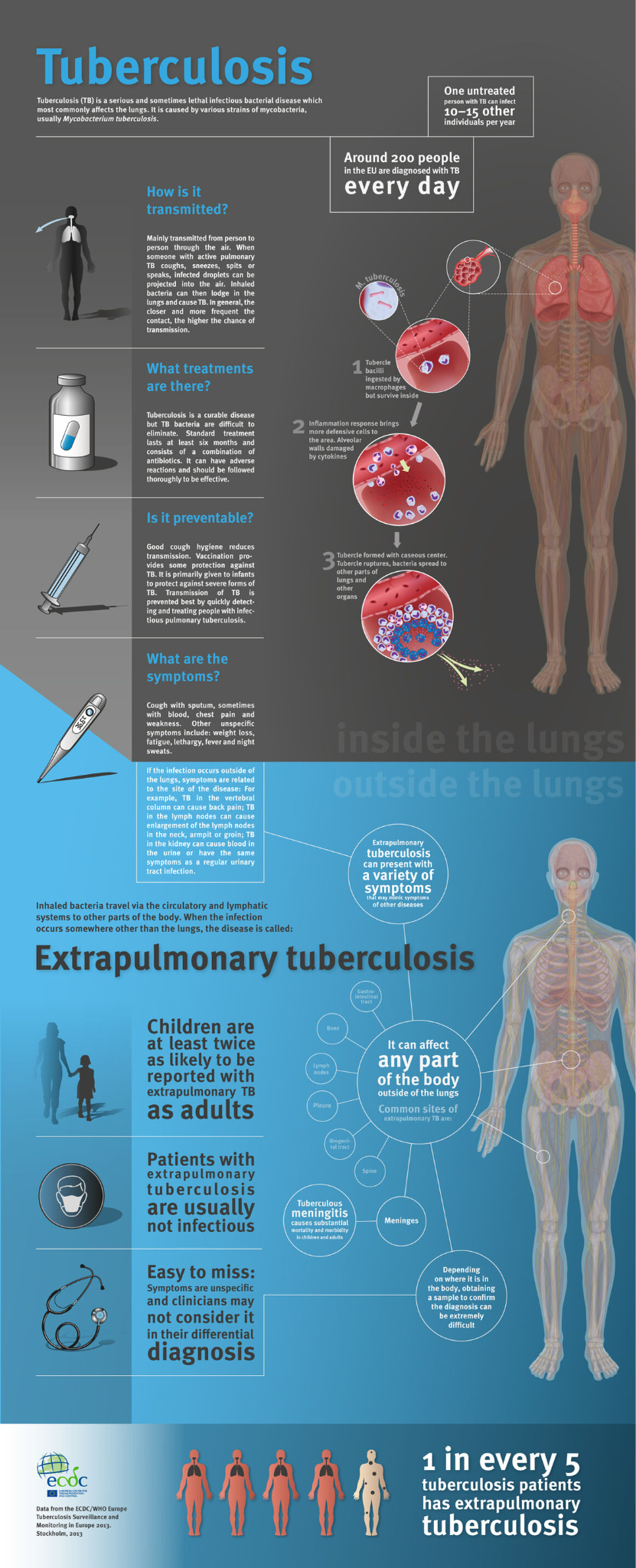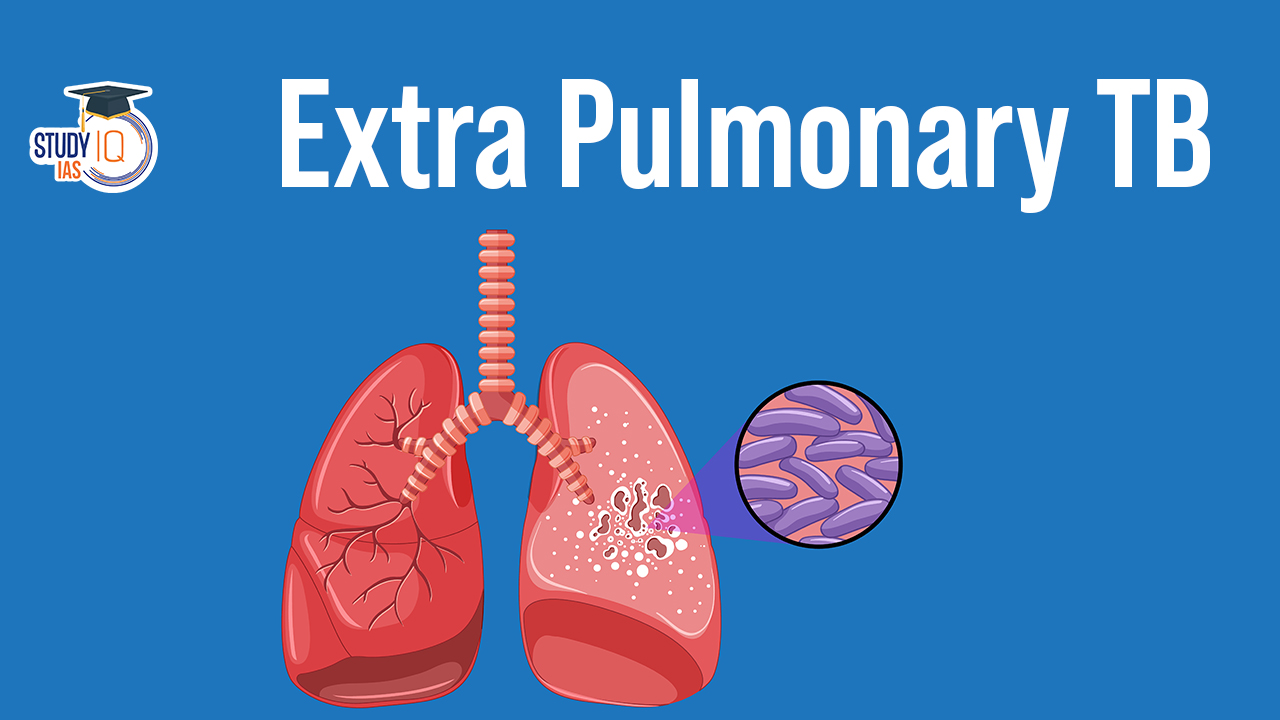Table of Contents
Context
- Extrapulmonary tuberculosis (EPTB) affects organs other than the lungs, such as lymph nodes, brain, gut, and eyes, accounting for about 20% of TB infections.
- Unlike pulmonary TB, EPTB often doesn’t show up in standard TB stain tests and may not involve a corresponding lung infection, making it difficult to diagnose.
| Fact |
|
Extrapulmonary Tuberculosis (EPTB)

Extra Pulmonary TB Challenges
Public Health Challenges
- Underdiagnosis: EPTB is often not detected by regular TB tests and its symptoms can mimic those of non-TB conditions. This leads to a significant number of undiagnosed or misdiagnosed cases.
- Damage and Complications: The underdiagnosis of EPTB can result in irreversible damage to affected organs, including vision loss or blindness in cases where the infection is in the eye.
Knowledge and Treatment Gaps
- Lack of Awareness and Expertise: There is a significant knowledge gap among healthcare providers regarding EPTB, particularly about its occurrence in organs that have immune privileges. This complicates the diagnosis and treatment efforts.
- Diagnosis and Treatment: Accurately diagnosing and effectively treating EPTB is challenging due to the lack of awareness and the absence of specific diagnostic and treatment protocols for different organs.
Collaborative Efforts and Guidelines
- INDEX-TB Guidelines: In 2014, a consortium of health experts from various institutions, the WHO, and the Cochrane Infectious Disease Group developed INDEX-TB, a set of guidelines for managing EPTB in India.
- However, these guidelines are based on good-quality evidence for only five organs and need updating.
- Need for Better Data Collection: Effective EPTB management is hindered by diverse data practices across specialist departments.
- There is a call for these departments to standardise data collection and share it with the National TB Control Programme to enhance the Ni-kshay portal, which currently lacks comprehensive EPTB patient data.
Research Priorities
- Understanding EPTB Mechanisms: Research is needed to explore how the TB bacterium interacts with different organs and the prolonged immunological responses even after the infection has been treated.
- This includes studying phenomena like persistent intraocular inflammation in the eye.
- Advanced Tools: Utilising advanced immunological tools like single-cell RNA sequencing could help reveal the immune mechanisms involved in EPTB, potentially leading to more effective treatments.
- Long-Term Treatment Challenges: Current treatments often involve prolonged anti-TB therapy, which may not always be effective and can expose patients to significant side effects.
Future Directions
- Updating INDEX-TB Guidelines: There is a crucial need to update the INDEX-TB guidelines with the latest data and multidisciplinary inputs to reflect the complex nature of EPTB.
- Clinical Trials for High-Quality Data: Conducting clinical trials is essential to develop and refine diagnosis and treatment protocols for all organs affected by EPTB.


 National Technology Readiness Assessment...
National Technology Readiness Assessment...
 Justice Mission-2025: China’s Live-Fir...
Justice Mission-2025: China’s Live-Fir...
 Suryastra: First Made-in-India Long-Rang...
Suryastra: First Made-in-India Long-Rang...

























